Hosta Leaves Turning Brown. Hostas get brown leaves sometimes. There are a few reasons why. Too much sun can burn the leaves. Not enough water can dry them out. Frost in spring will hurt new leaves. Bugs or fungus can attack them. Too much plant food can burn the roots. Bad water with too much salt and stuff makes problems.
To know why your hostas have brown leaves, look close. See if just parts are brown or whole leaves. Check if the brown spreads out from the tip or the base or from bites or spots. See when it happens. This helps find the problem.
Some tips to stop brown leaves:
- Pick the right hosta for sun or shade.
- Give them loose, rich soil. Cover with mulch.
- Water them regular but not too much.
- Feed with plant food in spring or early summer. Don’t overdo it.
- Protect from frost. Move pots to shade if needed.
- Check for bugs or disease. Use sprays if you find any. Read the label.
To fix brown leaves:
- Cut off the bad parts or whole leaves with clean scissors.
- Use fungicide or pest spray if needed. Follow the directions.
- Water a lot to wash out excess salts or toxins.
- Test soil and water. Add lime or sulfur to fix pH.
When you prune brown leaves:
- Remove them as soon as you see them so it does not spread.
- Don’t compost unless you know they are healthy.
- Better to burn or trash the leaves.
Those are the basics on dealing with hostas with brown leaves. Check yours regular and act fast. With some care they will stay green and growing strong.
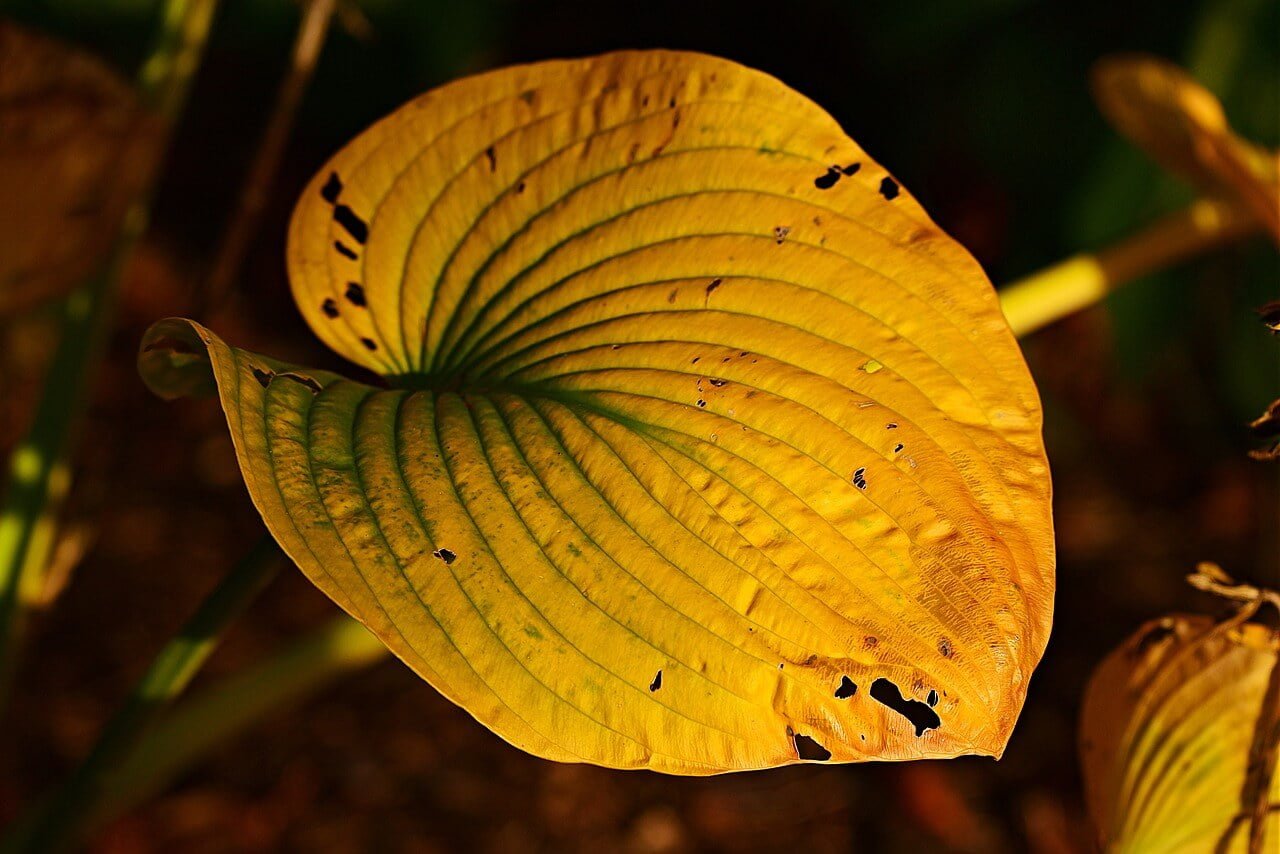
How to Identify the Cause of Hosta Leaves Turning Brown
Hostas get brown leaves for some reasons. You need to find why yours have this. Look close to know the cause. Then you can fix it.
Sunburn
Too much sun burns Hosta leaves. They like shade. Hot, dry weather makes it worse. Sunburn starts on leaf tips and edges. Those parts go yellow then brown. They get dry and crispy. Some Hostas take more sun than others. But all need some shade.
Drought Stress
Not enough water dries Hosta leaves out. They need damp soil. With drought, whole leaves go brown and wilt. Leaves may curl up too. More likely in summer when it is hot and dry. Potted Hostas suffer more drought as soil dries faster.
Frost Damage
Frost hurts new Hosta leaves in spring or fall. Cold weather after growth starts or before dormancy can cause this. Young, tender leaves get damaged most. Frost makes black or brown spots on leaves. Spots get soft and mushy. Happens more where weather changes fast or with late/early frosts.
Pest Infestation
Bugs eat Hosta leaves, making holes and marks. Damaged parts turn brown and die. Slugs, snails, deer, rabbits, mice, beetles, aphids, mites and more cause this. Worse in spring and summer when pests are active. Some Hostas have thick or hairy leaves that resist pests better.
Fungal Infection
Fungus diseases also turn Hosta leaves brown. Anthracnose, leaf spot, crown rot, root rot, powdery mildew can infect leaves. They make spots in different shapes, colors and sizes. Infected parts turn dry and brittle. More common when wet and humid or plants are stressed.
Over-Fertilization
Too much fertilizer burns Hosta leaves. They don’t need a lot. But excess or high-salt fertilizer harms them. Tips and edges go yellow then brown. Those parts get dry and crispy. Can happen any time but worse when soil is dry so salts don’t dilute.
Poor Water Quality
Bad water hurts Hostas. Chemicals, minerals, salts and pollution make leaves turn brown. Tips and edges go first, turning yellow then brown and dry. More likely with hard water or treated water. Can happen any time.
Check your plants closely. Look for signs to know the cause. Then you can fix it and keep your Hostas growing strong.
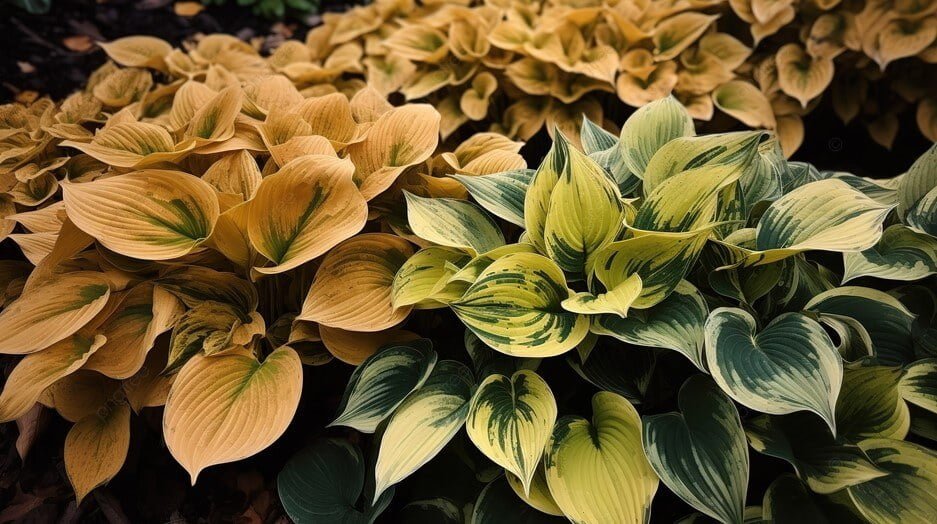
How to prevent hosta leaves turning brown
The best way to deal with brown leaves on hostas is to prevent them from happening in the first place. Here are some tips on how to prevent brown leaves on hostas:
Choose the right variety for your site conditions
Hostas come in hundreds of varieties that differ in their size, shape, color, texture, and sun tolerance. Some varieties are more suited for certain site conditions than others. For example, gold- or yellow-leafed varieties can tolerate more sun than blue- or green-leafed varieties, while small- or mini-sized varieties can fit better in containers than large- or giant-sized varieties. Therefore, before you buy or plant hostas, do some research on what varieties are best for your site conditions.
Plant them in well-drained soil with organic matter and mulch
Hostas need well-drained soil that does not stay soggy or waterlogged for long periods of time. Soggy soil can cause root rot and fungal diseases that can lead to browning in hosta leaves. To improve drainage, you can amend your soil with organic matter such as compost or peat moss before planting hostas.
Organic matter can also improve soil fertility and moisture retention. You can also mulch your hostas with organic materials such as shredded bark or pine needles after planting them. Mulch can help keep the soil moist and cool, suppress weeds, prevent erosion, and add nutrientsto the soil. However, avoid using mulch that is too thick or too close to the crown of the hostas, as this can cause crown rot and pest problems.
Water them regularly but not excessively
Hostas need regular watering to keep their soil moist but not wet. Watering frequency and amount depend on the weather, soil type, and plant size. Generally, hostas need about an inch of water per week during the growing season, either from rainfall or irrigation.
However, you may need to water more often in hot and dry weather or less often in cool and wet weather. To check the soil moisture, you can insert your finger into the soil up to the second knuckle. If the soil feels dry, it is time to water. When the soil feels moist, you can wait. If the soil feels wet, you have overwatered. When watering hostas, it is best to water deeply and thoroughly, rather than lightly and frequently.
This can help the roots grow deeper and stronger and prevent salt buildup in the soil. It is also better to water early in the morning or late in the evening, rather than in the middle of the day when the sun is strong and evaporation is high. This can prevent sunburn and fungal diseases. When watering hostas, avoid wetting the leaves, as this can also cause sunburn and fungal diseases. Instead, water at the base of the plants or use a soaker hose or drip irrigation system.
Fertilize them moderately with a balanced fertilizer in spring or early summer
Hostas do not need a lot of fertilizer to grow well, but they can benefit from some fertilizer to boost their growth and health. Fertilizing hostas moderately with a balanced fertilizer can provide them with essential nutrients such as nitrogen, phosphorus, and potassium.
However, fertilizing hostas too much or too often can cause more harm than good, as it can burn their leaves and roots and make them more susceptible to pests and diseases. The best time to fertilize hostas is in spring or early summer when they are actively growing. You can use a granular or liquid fertilizer with a ratio of 10-10-10 or 20-20-20, following the label instructions for dosage and application.
You can also use organic fertilizers such as compost, manure, or fish emulsion, but be careful not to overdo it as they can also be high in salts or pathogens. Avoid fertilizing hostas in late summer or fall when they are preparing for dormancy, as this can stimulate new growth that may not harden off before winter.
Protect them from frost and excessive sun exposure
Hostas are hardy plants that can survive cold winters, but they are not immune to frost damage. Frost damage can occur when the temperature drops below freezing after new growth has emerged in spring or before dormancy has set in fall. Frost damage can cause black or brown spots or patches on the hosta leaves that may not recover until next year.
To protect hostas from frost damage, you can cover them with a frost cloth, newspaper, cardboard, straw, or leaves when frost is expected. You can also delay cutting back the old foliage until after the first hard frost, as this can provide some insulation for the crown and roots. However, do not leave the old foliage on too long, as this can harbor pests and diseases over winter.
Hostas also need protection from excessive sun exposure, as too much sunlight can cause their leaves to scorch and turn brown. Sunburn usually affects the edges or tips of the leaves first, starting from a yellowish color and then turning brown. The affected areas may also become dry and crispy. Sunburn is more likely to occur in hot and dry weather conditions, especially in late spring or summer when the sun is more intense.
To protect hostas from sunburn, you can plant them in shade or partial shade where they receive morning sun and afternoon shade. You can also use shade cloth, umbrellas, trellises, arbors, pergolas, or other plants to provide some shade for your hostas during the hottest part of the day. However, do not shade your hostas too much, as this can reduce their growth and coloration.
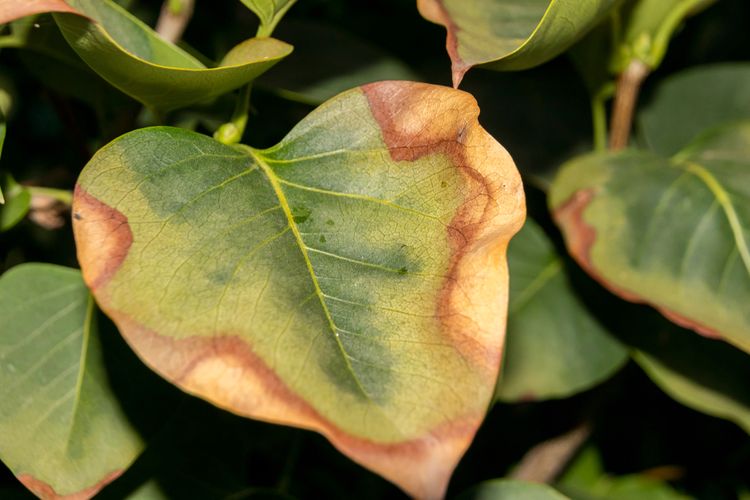
Inspect them for pests and diseases regularly and treat them promptly if needed
Hostas are susceptible to various pests and diseases that can cause browning in their leaves. Pests such as slugs, snails, deer, rabbits, voles,mice, squirrels, chipmunks, beetles, weevils, aphids, thrips, spider mites, and leaf miners can feed on the hosta leaves and cause holes, notches, streaks, blotches, or spots on them.
The damaged areas may then turn brown and die. Diseases such as anthracnose, leaf spot, crown rot, root rot, and powdery mildew can infect the hosta leaves and cause brown spots or lesions on them. The spots may have different shapes, sizes, colors, or margins depending on the type of fungus involved. The infected areas may also become dry and brittle.
To prevent and treat pests and diseases on hostas, you should inspect your plants regularly and look for signs of damage or infection. If you notice any pests or diseases on your hostas, you should act quickly and treat them promptly before they spread or worsen.
You can use various methods to control pests and diseases on hostas, such as:
- Cultural methods: These include removing weeds, debris, and old foliage that can harbor pests and diseases; watering and fertilizing properly to avoid stress; spacing and dividing hostas to improve air circulation; rotating hostas with other plants to avoid soil-borne diseases; and choosing resistant varieties.
- Mechanical methods: These include hand-picking or trapping pests such as slugs, snails, beetles, weevils, and rodents; using barriers such as fences, netting, or copper tape to deter pests such as deer, rabbits, voles, mice, squirrels, and chipmunks; using sticky traps or yellow cards to catch pests such as aphids, thrips, and spider mites; and using row covers or cloches to protect hostas from frost damage or sunburn.
- Biological methods: These include using natural enemies such as predators, parasitoids, or pathogens to control pests such as slugs, snails, beetles, weevils, aphids, thrips, spider mites, and leaf miners; using beneficial insects such as ladybugs, lacewings, or predatory mites to prey on pests such as aphids, thrips, and spider mites; using nematodes to kill pests such as slugs, snails, beetles, weevils, and root-knot nematodes; and using bacteria such as Bacillus thuringiensis (Bt) to kill pests such as leaf miners.
- Chemical methods: These include using pesticides such as insecticides or fungicides to kill or prevent pests or diseases on hostas. However, you should use pesticides sparingly and carefully on hostas, as they can also harm beneficial organisms or the environment. You should always follow the label instructions for dosage and application of pesticides. You should also wear protective clothing and equipment when handling pesticides. You should avoid spraying pesticides when the weather is windy or rainy or when bees are active. You should also rotate pesticides with different modes of action to avoid resistance.
How to treat hosta leaves turning brown
If you have already noticed brown leaves on your hostas due to any of the above causes,you can try to treat them by following these steps:
Hosta leaves turning brown Cut off the affected leaves
Cut off the affected leaves or parts of leaves with clean and sharp scissors or pruners. This can help prevent further spread of infection or damage and improve the appearance of your hostas. However, do not remove more than one-third of the foliage at a time, as this can weaken the plants and reduce their ability to photosynthesize.
Hosta leaves turning brown Apply fungicides
Apply fungicides or insecticides if necessary according to the label instructions. This can help kill or prevent the pests or diseases that are causing the browning in your hosta leaves. However, you should use pesticides sparingly and carefully on hostas, as they can also harm beneficial organisms or the environment.
You should always follow the label instructions for dosage and application of pesticides. Don’t forget to wear protective clothing and equipment when handling pesticides. You should avoid spraying pesticides when the weather is windy or rainy or when bees are active. You should also rotate pesticides with different modes of action to avoid resistance.
Hosta leaves turning brown Water the plants deeply
Water the plants deeply and thoroughly to flush out excess salts or toxins from the soil. This can help reduce the effects of over-fertilization or poor water quality on your hosta leaves. However, you should not overwater your hostas, as this can cause root rot and fungal diseases.
You should water your hostas only when the soil feels dry to the touch, and avoid wetting the leaves.
Hosta leaves turning brown Adjust the pH
Adjust the pH of the soil or water if needed with lime or sulfur. This can help correct the acidity or alkalinity of your soil or water that may be affecting your hosta leaves. Hostas prefer a slightly acidic soil with a pH of 6.0 to 6.5. If your soil or water is too acidic, you can add lime to raise the pH.
If your soil or water is too alkaline, you can add sulfur to lower the pH. However, you should test your soil or water pH before making any adjustments, and follow the label instructions for dosage and application of lime or sulfur.
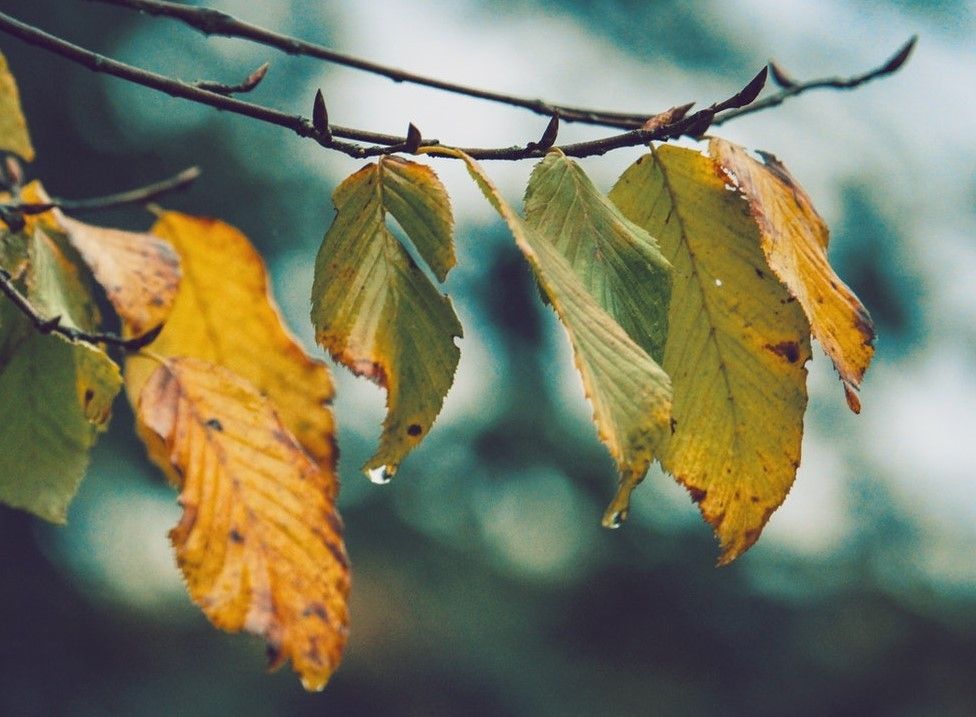
How to prune and dispose of hosta leaves turning brown
After treating your brown leaves on hostas, you should also prune and dispose of them properly to prevent further problems. Here are some tips on how to prune and dispose of brown leaves on hostas:
- Remove them as soon as they appear to prevent further spread of infection or damage. This can help keep your hostas healthy and attractive.
- Avoid composting them unless you are sure they are disease-free. Composting brown leaves on hostas can be a good way to recycle nutrients and organic matter, but it can also spread pests and diseases if they are not killed by the high temperature in the compost pile. Therefore, unless you are sure that your brown leaves on hostas are not infected by any pests or diseases, you should avoid composting them.
- Burn them or throw them in the trash instead. Burning brown leaves on hostas can be an effective way to destroy any pests or diseases that may be present on them, but it can also cause air pollution and fire hazards if not done properly. Therefore, you should only burn brown leaves on hostas if you have a safe and legal place to do so, and follow the local regulations for burning yard waste. Alternatively, you can throw brown leaves on hostas in the trash, but make sure to seal them in a plastic bag first to prevent any pests or diseases from escaping.
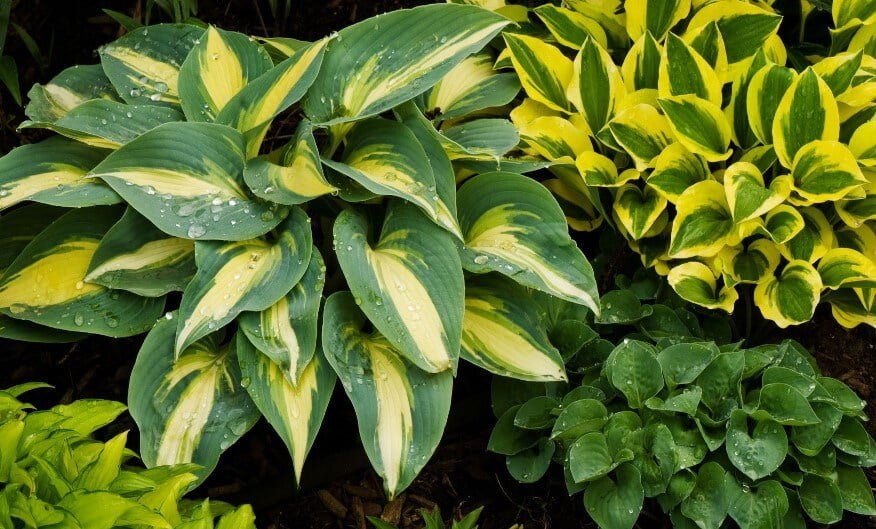
FAQ About Hosta Leaves Turning Brown
Here are some frequently asked questions about brown leaves on hostas:
Q: Can brown leaves on hostas recover?
A: It depends on the cause and severity of the problem. Some causes of browning in hosta leaves, such as sunburn, drought stress, frost damage, or over-fertilization, may be temporary and reversible if treated promptly and properly. The affected areas may turn green again or fall off naturally without affecting the overall health of the plants.
However, some causes of browning in hosta leaves, such as pest infestation or fungal infection, may be permanent and irreversible if left untreated or severe. The affected areas may not recover and may spread to other parts of the plant or other plants nearby.
Q: How often should I prune my hostas?
A: You should prune your hostas whenever you notice any damaged, diseased, dead, or unsightly foliage on them. This can help keep your hostas healthy and attractive throughout the growing season. However, you should not prune more than one-third of the foliage at a time, as this can weakenthe plants and reduce their ability to photosynthesize.
You should also prune your hostas in late fall or early winter when they go dormant. This can help prevent pests and diseases from overwintering on the old foliage and prepare your hostas for the next growing season.
Q: How can I make my hostas more colorful?
A: Hostas are known for their colorful foliage that comes in various shades of green, blue, gold, yellow, white, or variegated. However, some factors can affect the coloration of your hostas, such as sun exposure, soil pH, and nutrient availability. To make your hostas more colorful, you can try the following tips:
Choose varieties that have the color you want.
Some varieties are more colorful than others, and some may change color throughout the season. You can consult online databases such as [The Hosta Library] or [The American Hosta Society] for more information.
Plant them in the right location.
Some varieties need more sun than others to bring out their color, while some may fade or burn in too much sun. Generally, gold- or yellow-leafed varieties can tolerate more sun than blue- or green-leafed varieties, while white- or variegated-leafed varieties need some shade to prevent sunburn.
You can also use shade cloth, umbrellas, trellises, arbors, pergolas, or other plants to provide some shade for your hostas during the hottest part of the day.
Adjust the soil pH if needed.
Hostas prefer a slightly acidic soil with a pH of 6.0 to 6.5. However, some varieties may change color depending on the acidity or alkalinity of the soil. For example, some blue-leafed varieties may turn green in alkaline soil, while some gold- or yellow-leafed varieties may turn green in acidic soil.
If you want to change the color of your hostas by changing the soil pH, you can add lime to raise the pH or sulfur to lower the pH. However, you should test your soil pH before making any adjustments, and follow the label instructions for dosage and application of lime or sulfur.
Fertilize them moderately with a balanced fertilizer.
Fertilizing hostas moderately with a balanced fertilizer can provide them with essential nutrients such as nitrogen, phosphorus, and potassium that can enhance their growth and coloration. However, fertilizing hostas too much or too often can cause more harm than good, as it can burn their leaves and roots and make them more susceptible to pests and diseases.
The best time to fertilize hostas is in spring or early summer when they are actively growing. You can use a granular or liquid fertilizer with a ratio of 10-10-10 or 20-20-20, following the label instructions for dosage and application. You can also use organic fertilizers such as compost, manure, or fish emulsion, but be careful not to overdo it as they can also be high in salts or pathogens.
I hope this blog post has helped you understand how to prevent and treat brown leaves on hostas. If you have any questions or comments, please feel free to leave them below. Thank you for reading!